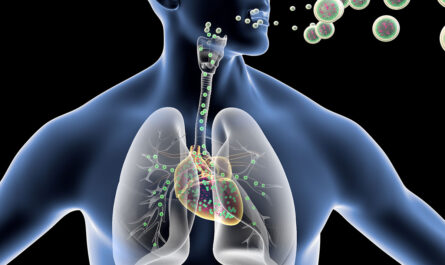
History Of Prosthetics And Orthotics
The field of prosthetics and orthotics has come a long way from its early beginnings. Some of the earliest evidence of prosthetic limbs dates back to ancient Egypt, where wooden toes, fingers and limbs were used by those who had lost limbs from combat or disease. During the middle ages, peg legs made of wood were commonly used by those who had lost a leg. In the 16th century, the first articulated knee joint was developed, greatly improving mobility. During the American Civil War and World Wars, there was increased demand for prosthetic limbs as more soldiers returned home missing limbs. This led to advances in materials like aluminum and plastics replacing wood. Myoelectric prosthetics controlled by electromyography also emerged in the 1950s-1960s, allowing more natural motion.
Materials Advancements Driving Innovation
New materials have revolutionized the field of prosthetics and orthotics. Carbon fiber, thermoplastic polymers and lightweight alloys are much more durable and comfortable than older materials like wood and heavy metals. Carbon fiber in particular has enabled far more lifelike and functional prosthetics that can better replicate natural joint movement. 3D printing is also being utilized to create customized socket interfaces and limb components specific to an individual’s anatomy. This allows for a better, more personalized fit that minimizes discomfort. Composite materials that blend carbon fibers, Kevlar and thermoplastics provide optimal strength, flexibility and lightweight properties. Ongoing research is exploring even more advanced biomimetic materials that merge mechanical and biological properties.
Bringing Prosthetics Closer To Natural Movement
The goal of modern prosthetics is to restore as natural a gait and range of motion as possible. Myoelectric systems rely on muscle signals in the residual limb to power movement in the prosthesis joint. Sensors interpret electrical impulses from muscles and translate them into motion. These have advanced from controlling single movements to simultaneous multi-joint control providing more natural walking patterns. Breakthroughs in targeted muscle reinnervation surgery are improving interface between residual nerves and prosthetics. This surgical technique redirects remaining nerves to alternate muscle sites, enabling them to serve as biological controls. Another area of exploration is neural interfaces that could one day allow direct brain-computer communication for intuitive, seamless prosthetic control. Ongoing studies seek to augment electrode and sensing technologies to achieve verisimilitude.
Expanding Orthotic Applications
Traditionally focused on bracing and immobilization, orthotics are increasingly integral to rehabilitation, recovery and enhanced functionality. Examples include diabetic walkers and injection ports to ease medication delivery. Custom orthotics are 3D printed based on gait analysis and biomechanics to provide optimum support. Innovations like powered ankle-foot orthoses have rehabilitated mobility for those with paralysis or weakness. Fitness trackers, pressure sensors and microprocessors incorporated into orthotic design monitor health metrics and biomechanics, aiding clinicians. Exoskeletons offer orthotic support merged with active assistive capabilities, helping people with disabilities or injuries to stand, walk or perform daily activities. With robotics integration, exoskeleton tech may one day restore higher-level functions for those with spinal cord injuries or other impairments.
Bridging The Mind-Machine Divide
One of the most promising areas of prosthetics research aims to forge a direct pathway between the brain and artificial limbs. Brain-computer interface (BCI) technology utilizing electroencephalography (EEG) has shown potential to tap cortical signals and enable prosthetic control via thought alone. In a groundbreaking 2016 experiment, researchers used a high-density EEG cap to record brain activity from regions responsible for hand movement in a tetraplegic patient. A decoding algorithm translated those signals into commands operating a mind-controlled prosthetic hand in real-time. Other teams are investigating neural implants as a more targeted interface. Electrode arrays could potentially tap individual neuron firing patterns and cortical maps, reading neurological intent at high resolution. Challenges remain but BCI is revolutionizing how we interact with assistive devices and restoring agency for those with disabilities. If issues like long-term biocompatibility and circuit miniaturization can be solved, direct neural interfaces may one day restore near-natural function.
Augmenting Lives Through Continued Innovation
As materials, sensing capabilities and interface technologies progress, the field of prosthetics and orthotics continues pushing boundaries to restore lost functions and augment human potential. Multi-disciplinary collaborations integrating biomechanics, neural engineering, robotics, 3D printing and materials science is driving next-generation solutions. Promising areas on the horizon include powered prosthetic joints for enhanced strength and endurance, anthropic hands capable of intricate dexterous tasks, and prosthetics wirelessly controlled via implantable chips. For orthotics, targeted sensory feedback and active assistance promise to restore independence, prevent falls and reduce long-term burden of care. With healthcare systems increasingly supporting access and innovation, prosthetics and orthotics will further transform lives for years to come through enhanced mobility, rehabilitation and renewed agency. Continued research holds tremendous promise to bridge the remaining divides between physiology and mechanism.
*Note:
- Source: Coherent Market Insights, Public sources, Desk research
- We have leveraged AI tools to mine information and compile it


